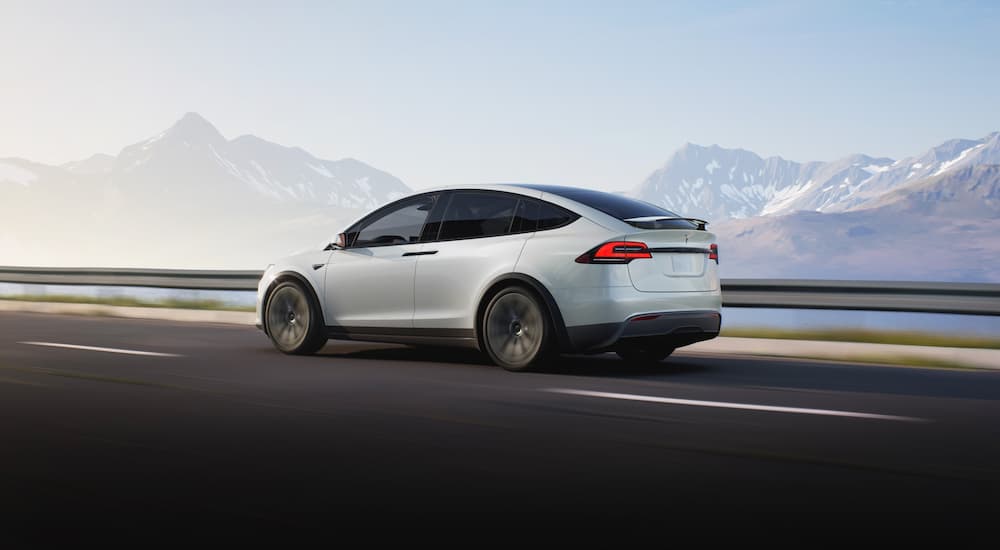According to a recent statement from one major manufacturer, the global semiconductor shortage that’s hammered the auto industry in recent years looks to be letting up. It’s good news for automakers, many of which have been forced to slash production in response to the crisis. However, it could still take some time for the average consumer to notice an effect as the semiconductor industry struggles to shift its focus away from the consumer electronics sector.
“Automotive demand continued to increase, and today we’re still probably not supplying 100 percent of the wafers they want, but it’s improving,” said C. C. Wei, CEO of Taiwan Semiconductor Manufacturing Co (TSMC), the world’s largest manufacturer of semiconductors. “We expect the shortage to be relaxed quickly. We expect auto shipments to grow again this year.”
The pandemic profoundly affected nearly every aspect of the economy, and the auto industry was no exception. Between an uncertain economic outlook and widespread travel restrictions, vehicle sales were down throughout much of the pandemic. The consumer electronics sector, on the other hand, saw no such lull. With people stuck at home and eager for a distraction, consumer electronics were flying off the shelves, creating a severe bottleneck in the global supply of microchips. The so-called “chip crunch” had a noticeable effect on automakers, which cut nearly 10.5 million vehicles from their production schedules in 2021 and 4.55 million in 2022, according to AutoForecast Solutions. The production ramp-up continues going into 2023, with automakers reducing production schedules by fewer than three million units.
With all the talk of a chip shortage in recent years, some might be surprised to learn that there’s actually a glut of chips on the market––just not the type found in today’s vehicles. The microchips used in the auto industry tend to be less complex than those in consumer electronics like smartphones, tablets, smart devices, and the like. While demand for these types of consumer electronics has significantly decreased in recent months, the auto industry can’t exactly gobble up the historic amount of excess chips. The oversupply of consumer electronics-grade microchips isn’t expected to ease until mid-to-late 2023, according to a Nikkei survey of industry analysts.
When it comes to the automotive sector, forecasts range from optimistic to dreary. General Motors CEO Mary Barra recently said the semiconductor shortage could still impact global production throughout much of 2023, while Intel predicted that the issue may persist well into 2024. Others anticipate reduced inventory that could stretch until 2027. One thing is for sure: as drivers continue to embrace electric vehicles, the microchip supply chain is going to become more important than ever.
The average gas-powered vehicle is packed with around $500 worth of semiconductors used to control infotainment systems, displays, advanced driver assistance systems, and more. However, that pales in comparison to many of today’s EVs. Due to their electric powertrains, EVs require a generous amount of semiconductors in order to control electric currents and address power supply management. These components typically cost around $1,600 per unit––three times as much as a comparable gas-powered car, truck, or SUV.
While TSMC’s recent announcement was welcomed news for many, fears of an oncoming recession, continuing supply chain issues, a growing EV sector, and other factors have led many to temper their expectations for a full recovery. It’s too early to tell what 2023 might have in store for the auto industry, but at least there’s not a little light at the end of the chip crunch tunnel.
Tesla Addresses Sales Slump With Dramatic Price Cuts
Speaking of EVs, the industry’s leading electric car manufacturer is slashing prices across the board in order to drum up sales. It’s been a tough year for Tesla, which shed 65 percent of its stock value in the last 12 months thanks to rising interest rates and an unpredictable CEO. Now the leading EV brand is fighting back, slashing prices on some of its most popular models by as much as 20 percent in a bid to drum up sales.
The price cuts extend to all Tesla models sold in the United States. The best-selling Model Y saw the most dramatic reductions, with Tesla lowering the EV’s price by some 20 percent from $65,990 to $52,990. The price cuts were a little less pronounced in other models but still substantial. Even better, the discounted Model Y will now qualify for the EV tax credit program passed as part of 2022’s Inflation Reduction Act.
The new tax credits give drivers a $7,500 discount on qualifying EVs. Tesla’s prices have historically put many of the brand’s EVs above the program’s $55,000 price threshold ($80,000 for SUVs and trucks), but with the price cuts, Tesla-curious buyers can now take advantage of the EV tax credit. When factoring in the lower price and $7,500 EV tax credit, the Model Y is now an astounding 30 percent cheaper than it was in late 2022, with a price drop that amounts to some $20,500 in savings. Tesla’s entry-level Model 3––which was the automaker’s most affordable offering at $46,990––is now down to $43,990, and drivers can take advantage of a further $7,500 in savings through the EV tax credit program.
The price cuts were an unprecedented move from Tesla, which had been steadily increasing prices in recent years in response to inflation and increased demand. But with a growing inventory and flagging sales, something had to be done. Tesla CEO Elon Musk cited the impact of “radical interest rate changes” on the auto industry in late 2022, and the recent moves seem to be an attempt to prop up sales in an uncertain market.
Tesla’s own stock woes could have as much to do with Musk as the industry itself, but the recent downward trend wasn’t limited to Tesla. Fledgling EV brands like Rivian, Nikola, Lucid, and Nio also posted stock losses ranging from 69 to 82 percent. In some ways, it could be seen as a long-anticipated market correction as these startups struggle to match the early success of Tesla. The stock slump even extended to established brands less reliant on the EV approach, with legacy automakers like General Motors, Ford, Stellantis, and Volkswagen all seeing losses.
Used Prices Fall, Luxury Sales Explode
In addition to hampering sales and causing supply chain woes, the pandemic also created something of a bubble in the used vehicle market. With the delivery of new vehicles delayed due to shuttered factories and unavailable semiconductor chips, used vehicle prices shot through the roof. Now, according to the country’s largest wholesale car auction house, the market looks to be making a correction.
In the monthly Manheim Used Vehicle Value Index report released in early January, the company announced that used vehicle prices have fallen by almost 15 percent compared to 12 months prior. This seems like a massive drop, and it is––the 14.9 percent figure is the largest annual decline in Manheim’s 26-year history––but it’s important to put that figure into context. Current prices are almost 50 percent higher than in 2019 before the pandemic’s economic effects were felt, so the 14.9 percent figure is still far from the norm.
“These last three years have been extremely volatile for the market, and these declines follow record increases. In December 2021, we were up 47% year over year,” said Jonathan Smoke, Cox Automotive’s chief economist. “The pre-pandemic levels will likely never return, but all indicators point to reaching equilibrium in the second half of 2023.”
While it’s too early to know what effect these falling prices will have on the used vehicle market, it seems that the segment as a whole is on the downslide. Drivers are increasingly opting for new vehicles over their used counterparts, which have been perceived as offering less value in recent years. “Consumers realize that used cars are not the great deal they once were, particularly as higher interest rates can actually make them more expensive,” says Jake Fisher, senior director of Consumer Reports Auto Test Center.
The trend towards newer vehicles is especially noticeable in the ultra-luxury segment, where brands like Lamborghini, Rolls-Royce, and Bentley posted record-setting years in terms of sales. Lamborghini increased sales by 10 percent in 2022, while Bentley improved by 4 percent. Rolls-Royce sold more than 6,000 units for the first time in the company’s 100-plus-year history as luxury buyers flocked to the brand despite a $500,000 average transaction price.






